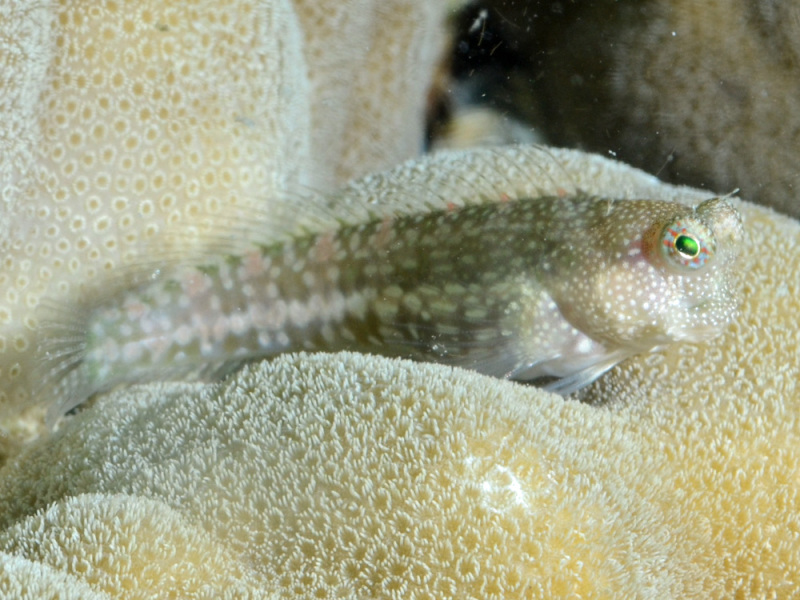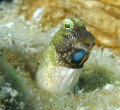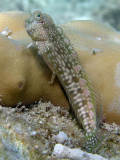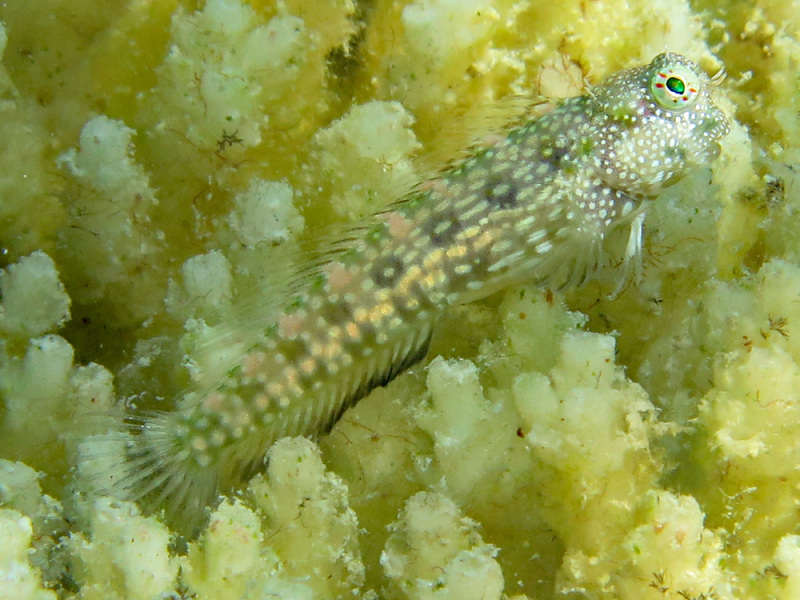
©Anne Hoggett: One of at least three Salarias alboguttatus occupying a table coral that had recently died following bleaching, at Clam Garden, Lizard Island.
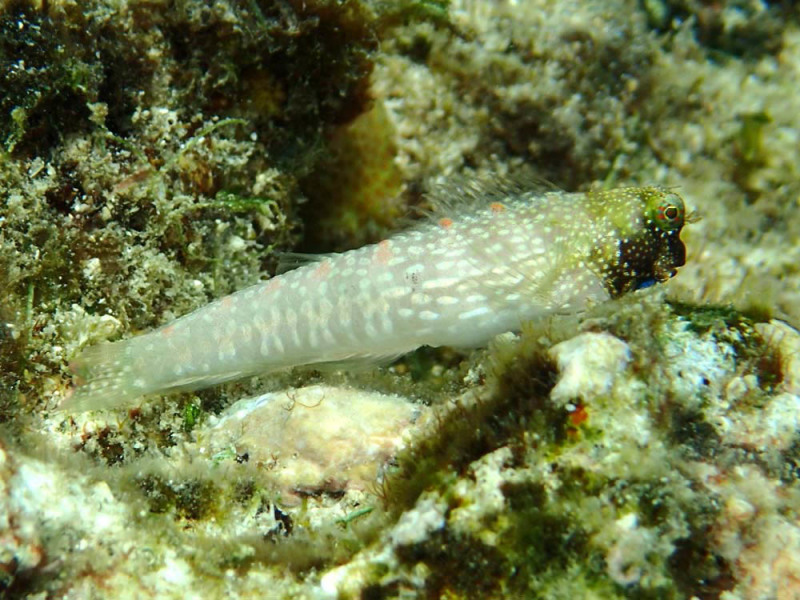
©Barbara Banks: A male Salarias alboguttatus in breeding colouration on the eastern side of Lizard Island.
Colours
Distinguishing features
A small greyish fish with irregular rows of white and pink/brown spots along the sides. Males in breeding colouration have a dark head and a bright blue and orange spot on the throat. Found resting on the top of coral heads.
Size
- Up to 9 cm (Standard length)
Depth range
- Depth range data is not yet available.
Synonyms
Distribution
Distribution and habitat preferences
Tops of massive Porites spp (massive) coral heads in shallow water.
Found in most reef habitats around the island not exposed to heavy wave action.
Behaviour
The Whitespotted Blenny lives in small family groups on top of prominant coral heads and bommies. They rest on the pectoral fins in between bouts of feeding and chasing each other around the territory. These fishes are mainly detritivores, combing small particles of organic material from the turf algae found inside the damselfish territories of Ward's Damsel and the Dusky Gregory, which typically farm algae on the tops of the bommies favoured by the blenny. When the males are breeding they indulge is vigorous displays which included much bobbing and flashing of the colourful throat patches.
Web resources
References
- Goatley, C.H.R., A. González-Cabello and D.R. Bellwood (2016). Reef-scale partitioning of cryptobenthic fish assemblages across the Great Barrier Reef, Australia. Marine Ecology Progress Series, 544: 271-280. LIRS catalog number 2039.
- Holbrook, S.J., R.J. Schmitt, V. Messmer, A.J. Brooks, M. Srinivasan, P.L. Munday and G.P. Jones (2015). Reef fishes in biodiversity hotspots are at greatest risk from loss of coral species, PLOS One, doi10.1371/journal.pone.0124054. LIRS catalog number 1915.
- Jabbar, A., A. Asnoussi, L.J. Norbury, A. Eisenbarth, S. Shamsi, R.B. Gasser, A.L. Lopata and I. Beveridge (2012). Larval anisakid nematodes in teleost fishes from Lizard Island, northern Great Barrier Reef, Australia. Marine and Freshwater Research, 63: 1283-1299. LIRS catalog number 1584.
- View all references
